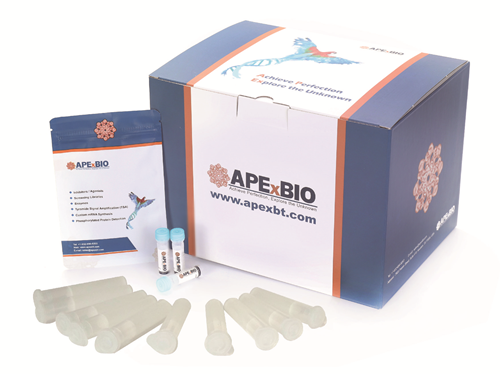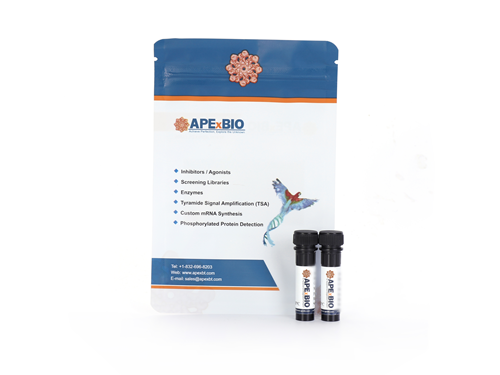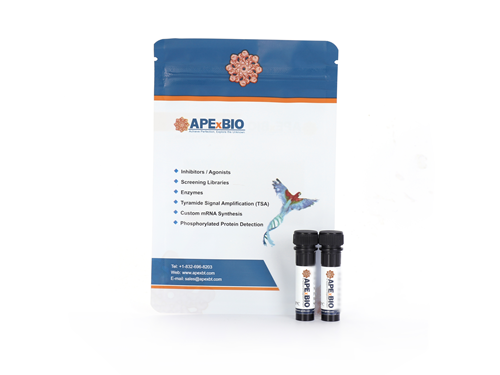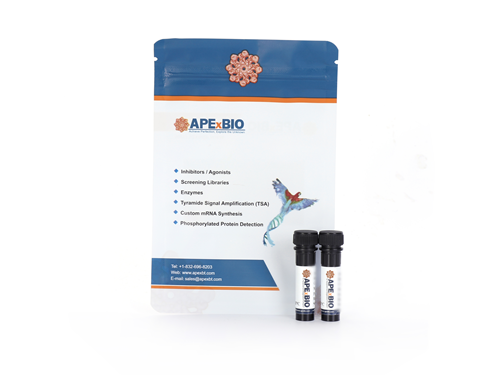NHS-SS-Biotin Kit
| Sufficient For: 10 labeling reactions, each with 1 to 10 mg of antibody | |||
| Streptavidin | 10 mg | NHS-SS-Biotin | 25 mg |
| HABA Solution | 1 mL | PBS Pack (makes 1 L) | 1 pack |
| Sephadex G-25 in PD-10 Desalting Columns | 8.3 mL, 10 columns | ||
| Store biotin and streptavidin reagents at -20°C. Store remaining kit components at 4°C. | |||
| Label or Dye: | Biotin | Product Size: | 10 reactions |
| Labeling Scale: | 1-10 mg | Labeling Target: | Proteins (General), Antibodies (General) |
• Amine-reaction—Reacting with primary amines (-NH2), such as lysine side-chains, or the amino-termini of polypeptides.
• Labeling antibody—This kit can label antibodies to facilitate immobilization, purification or detection.
• Labeling protein—This kit can label proteins to facilitate immobilization, purification or detection.
• Labeling Cell surface molecule—This kit can label the cell surface proteins because the negatively charged reagent does not permeate cell membranes.
• Reversible—Disulfide bond in spacer arm allows the biotin label to be removed using reducing agents such as DTT; only a small sulfhydryl group remains attached to the molecule.
• Medium length—Spacer arm (total length added to target) is 24.3 angstroms; it consists of the native biotin valeric acid group extended by a 7-atom chain
• Solubility increased—Sulfo-NHS group increases reagent water solubility compared to ordinary NHS-ester compounds.
NHS-SS-biotin (Succinimidyl-2-(biotinamido)-ethyl-1,3-dithiopropionate) is a long-chain cleavable amine-reactive biotinylation reagent that has a spacer arm of 24.3 A in length due to the existence of a cross-bridge within its chemical structure. The long spacer arm creates an increased length between a covalently modified molecule and the bicyclic biotin rings that greatly enhances the ability of the molecule to bind to avidin or streptavidin probes. The NHS ester group of NHS-SS-biotin reacts with the amine groups of proteins and other molecule forming an amide bond and releasing of sulfo-NHS. NHS-SS-Biotin is a water-insoluble molecule that requires the dissolution of organic solvents prior to be added to aqueous reactions.












